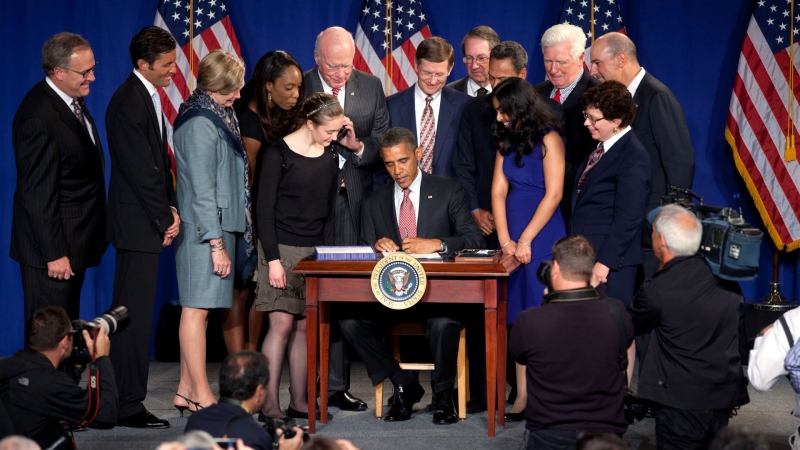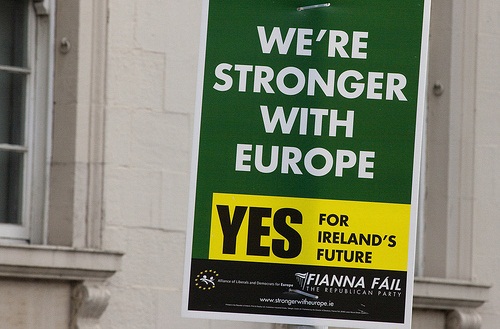The final package of the Leahy-Smith America Invents Act (H.R.1249, pdf) will enter into force on 16 March 2013 (for a list of amendments and their effective dates, see here). By this date, the most significant amendments of the new Act will enter into force, namely the transformation from the traditional first-to-invent regime to the new first-inventor-to-file regime.
Besides reducing the USPTO’s backlog of approx. 680.000 patent applications and improving patent quality, the main objective of the America Invents Act is to harmonise the US patent system better with international patent law standards and by that facilitate second filings of US applicants in foreign jurisdictions.
This is indeed a brilliant idea, not only for US applicants but also for European applicants and practitioners, as it will align the US system closer with the European patent system. However, event for those legal instruments that are clearly adapted to the European point of view, important differences remain. Some of those tiny differences that may have a huge impacts on practice are outlined below:
On March 16, 2013, the final (third) package of the Leahy-Smith America Invents Act (H.R.1249, pdf) will enter into force. This will include the transition from the traditional US fist-to-invent system to the first-to-file system as used in the rest of the world. In a recent press release the USPTO announced publication of the
- Examination guidelines for implementing the first inventor to file provisions and the
- Final rules to implement the first inventor to file provisions.
On this blog’s German sister blog ksnh::jur we recently published a series of three postings dedicated to the changes the America Invents Act causes to US patent law. As this piece of US legislation implements one of the most important reforms of internation IP law in recent years, its provisions, legal effects and possibel shortcommings have been extensively – and partly exellently – discussed by so many US blogs that there surely is no need to add another synopsis on a Europe-focussed IP blog like this.
However, as a large portion of our regular readers live and practice in the German-speaking part of Europe, we thought that some of them might appreciated to read about this topic in their mother tongue. The three articles are structured parallel to the three packages of the AIA that enter(ed) into force on 16 Sep 2011 and 16 Sep 2013 and on 16 Mar 2013:
Die Änderungen im US-Patentrecht durch den ‘America Invents Act’
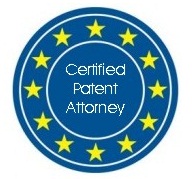 Inspired by this discussion of our recent posting on the latest draft UPC rules of procedure it appears to be high time to have a closer look into Article 48 UPC and related Rule 286 RoP in order to possibly figure out the legislator’s idea of representation rights.
Inspired by this discussion of our recent posting on the latest draft UPC rules of procedure it appears to be high time to have a closer look into Article 48 UPC and related Rule 286 RoP in order to possibly figure out the legislator’s idea of representation rights.
As European and German patent attorneys we still remember the recommendation of the 2006 Venice Patent Judges Symposium according to which only “attorneys-at-law who are fully entitled to represent parties in ordinary civil proceedings in the courts of first instance of the convention states” should be authorised to represent cases before the UPC (see Venice II resolution, page 11, item 5). Later, at the peak of the lobbying battle for representation rights (see e.g. here and here) also the European Parliament’s JURI Committee and its influential rapporteur Klaus-Peter Lehne, an attorney-at-law and partner of international law firm Taylor Wessing, urged it is of “utmost importance” that
the parties should be represented only by lawyers authorised to practise before a court of a Contracting Member State; the representatives of the parties might be assisted by patent attorneys who should be allowed to speak at hearings before the Court [2011/2176 (INI)]
Different voices came from industry organisations, patent practitioners and academia, who raised for good reasons (see here, here, here) that European Patent Attorneys should be authorised to represent their clients before the UPC as well.
Before this background, Article 48 UPCA can be understood as an acceptable compromise:
(1) Parties shall be represented by lawyers authorised to practise before a court of a Contracting Member State.
(2) Parties may alternatively be represented by European Patent Attorneys who are entitled to act as professional representatives before the European Patent Office pursuant to Article 134 of the EPC and who have appropriate qualifications such as a European Patent Litigation Certificate.
(3) The requirements for qualifications pursuant to paragraph 2 shall be established by the Administrative Committee. A list of European Patent Attorneys entitled to represent parties before the Court shall be kept by the Registrar.
(4) … (7)
According to this provision, basically three groups of professionals are authorised to independently represent cases before the UPC, namely
- Lawyers,
- European Patent Attorneys having the European Patent Litigation Certificate, and
- European Patent Attorneys having an appropriate qualification.
The short answer is … we don’t know yet!
A slightly longer answer is: It will, in the end, depend on the CJEU’s own interpretation of Article 5 of the Unitary Patent Protection Regulation (UPPR) and its understanding of the nature of the Unitary Patent Court Agreement (UPCR).
And a straightforward answer may be: Only very rarely, if at all, because of three reasons:
- The CJEU is not a regular third instance above the two instances of the Unified Patent Court.
- The centralised structure of the Unified Patent Court – involving a Central Division in the first instance and a sole Court of Appeal as the second instance – will largely ensure uniform interpretation of substantive patent law anyway.
- As substantive patent law is largely harmonised in Europe already and thus falls under the acte-clair-doctrine, there are only very limited substantive patent law issues left that are in risk of being interpreted differently in different countries (or by different local/regional UPC divisions) and would thus need to be decided by a preliminary ruling according to Art 267 TFEU.
The more detailed answer. While all this may or may not be true, it still makes sense to (again) look closer into Article 5 UPPR, which has been introduced as Article 5a into the draft Regulation on the EU Council meeting of 28/29 June 2012 in exchange of former Articles 6 to 8 draftUPPR that caused so much headaches to (parts of) the profession and industry (see e.g. here and here), especially in the UK (see here). The removed UPPR articles have been introduced into the UPCA as new Articles 14f to 14i. New Article 5 UPPR and its crucial § 3 reads:
Article 5 (Uniform protection)
1. The European patent with unitary effect shall confer on its proprietor the right to prevent any third party from committing acts against which that patent provides protection throughout the territories of the participating Member States in which it has unitary effect, subject to applicable limitations.
2. The scope of that right and its limitations shall be uniform in all participating Member States in which the patent has unitary effect.
3. The acts against which the patent provides protection referred to in paragraph 1 and the applicable limitations shall be those defined by the law applied to European patents with unitary effect in the participating Member State whose national law is applicable to the European patent with unitary effect as an object of property in accordance with Article 7.
4. [...]
But what does that mean?
As recently reported on this blog, the Unitary Patent Project of the European Union has been driven some big steps forward during December last year. The crucial dates were:
- 10 Dec 2012: The European Council endorses the EU Unitary Patent Package.
- 11 Dec 2012: The Advocate General of the CJEU hands down his opinion to dismiss the appeals of Spain (C-274/11) and Italy (IC-295/11) against enhanced cooperation in the field of unitary patent protection.
- 11 Dec 2012: The European Parliament approves the EU Unitary Patent Package.
- 17 Dec 2012: The European Council approves the EU Unitary Patent Package.
The texts finally adopted and approved by the competent EU institutions are the following:
- Proposal for a regulation implementing enhanced cooperation in the area of the creation of unitary patent protection, Regulation EU 1257/2012 (cf. consolidated text of 17/12/12 (PE-CONS 72/1/11); texts adopted on 11/12/12; cf decision-making monitor and procedure file),
- Proposal for a regulation implementing enhanced cooperation in the area of the creation of unitary patent protection with regard to the applicable translation arrangements, Regulation EU 1260/2012 (cf. consolidated text of 12/12/12 (18855/2/11 REV 2); texts adopted on 11/12/12; cf. decision-making monitor and procedure file),
- Resolution on jurisdictional system for patent disputes (cf. latest draft agreement of 14/11/12; texts adopted on 11/12/12; cf. procedure file).
While the political class is celebrating its ultimate success (e.g. Commissioner Michel Barnier, the Council Presidency, the EU Parliament, and the EPO with its President Benoît Battistelli), the political driving forces predict (and expect) even more ambitious progress on the final meters of implementing the new post-grant patent infrastructure in (some parts of) Europe:
- 18 Feb 2013 – Signature of the UPC Agreement and start of the ratification process (UPC will enter into force upon 13 ratifications, including mandatory ratifications in UK, France and Germany, cf. Art. 59 UPC Agrmnt),
- 01 Nov 2013 – Full ratification of UPC Agreement expected,
- 01 Apr 2014 – Issuance of first unitary patents by EPO and Unified Patent Court ready to receive first cases.
The project, however, is not at all cut and dried and there certainly is no automatism leading to its implementation within the 25 EU member states that originally supported enhanced cooperation. In fact, there are more challenges ahead than one may expect, especially with respect to the national ratification processes, which are required as the UPC Agreement, as an international treaty, will transfer statutory legal rights (i.e. national patent jurisdiction) to the European level.
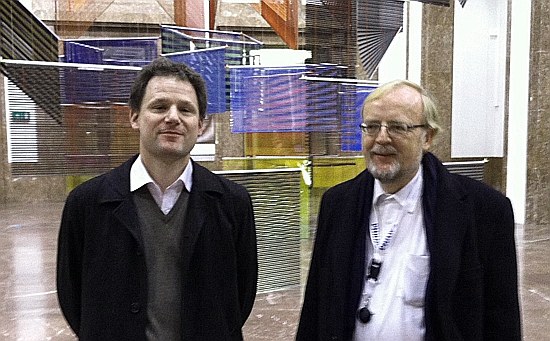
IP bloggers exhausted from the Unitary Patent end-of-year rallye but happy that finally some blinds were openend to permit a view of the new pan-European patent landscape.
OUR BEST WISHES FOR A MERRY CHRISTMAS
AND A HAPPY NEW YEAR
LES MEILLEURS VŒUX POUR UN JOYEUX NOËL
ET UNE BONNE ANNÈE
UNSERE BESTEN WÜNSCHE
FÜR FRÖHLICHE WEIHNACHTEN
UND EIN GLÜCKLICHES NEUES JAHR
After the last-minute amendments of the Unitary Patent Regulation (UPR) by the European Council on 28/29 June, who suggested
that Articles 6 to 8 of the Regulation [...] to be adopted by the Council and the European Parliament be deleted
lead to a removal of this matter from the EU Parliament’s agenda and unleashed a wave of revulsion among members of the EU Parliament in general and those of its legal committee (JURI) in particular (see here and here), the direction in which today’s JURI meeting would go was not utterly hard to predict.
And in fact, today’s press release confirmed what could have been expected anyway:
The European Council’s move to change the draft law to create an EU patent would “infringe EU law” and make the rules “not effective at all“, Bernhard Rapkay (S&D, DE), who is responsible for the draft legislation, told the Legal Affairs Committee on Tuesday. Most MEPs strongly criticised the European Council’s move and agreed to resume the discussion in September.
Apparently, this opinion is backed by the Parliament’s legal service, assuming that deleting Articles 6 to 8 UPR would “affect the essence of the regulation” thus be incompatible with EU law.
Yesterday evening, MARQUES, an association of worldwide brand owners that is an accredited organisation before the OHIM (cf. OAMI Users’ Group) and observer at the OHIM Administrative Board, has made a noteworthy move as it offered its interpretation of the conclusions to be drawn from the final judgement of the CJEU in case C-307/10 IP TRANSLATOR (see earlier report) in an open letter sent to the national IP offices of all EU member states, the Benelux IP office, and the Office for Harmonisation in the Internal Market itself. The letter is undersigned by Nunzia Varricchio, Chair of MARQUES Council, and my partner Jochen Höhfeld, Chair of MARQUES Trade Mark Law and Practice Team.
As already summarised here, the trademark application ‘IP TRANSLATOR‘ was launched as a test case by the Institute of British Patent Attorneys (CIPA) to obtain a review of OHIM‘s practise as to the meaning of class headings by the CJEU. The national UK trademark ‘IP TRANSLATOR’ was claimed for ‘Education; providing of training; entertainment; sporting and cultural activities’, i.e. the class heading of Class 41 of the Nice Classification. The UK IPO refused the application on the basis of Article 3(1)(b) and (c) of Directive 2008/95 and OHIM Communication No 4/03, according to which the trademark covers all services falling within Class 41, so that the trademark was considered lacking distinctive character and being descriptive in nature for “translation services”, which also falls within Class 41. The subsequent appeal to the referring court raised that the application did not specify, and therefore did not cover, translation services. The issued decision appears quite clear on this problem, as it clarifies
- that the goods and services must be identified with sufficient clarity and precision to enable third parties, on that basis alone, to determine the extent of protection;
- that the general indications of the class headings may be used provided they are sufficiently clear and precise; and
- that, if (all general indications of) a class heading is used, this will not be considered to cover the entire class if this is not considered sufficiently clear and precise (no. 62). In this case, the applicant would have to specify the goods and services further.
Thus, the CJEU clearly voted for the means-what-it says approach.
As reported here and elsewhere [1, 2, 3], the European Council agreed on the EU Unitary Patent and a EU Unified Patent Court at last week’s Brussels EU summit after volatile negotiations – by ‘suggesting’ two significant amendments (see summit conclusion, page 2, item 3) as compared to what was know from the latest available draft text of the Unitary Patent Regulation dated 23 June 2011 (see here and here).
EU Court of Justice: The more severe one of those amendments that apparently was pushed through by UK Prime Minister David Cameron to please his eurosceptics allies at home, demands
that Articles 6 to 8 of the [Unitary Patent] Regulation [...] to be adopted by the Council and the European Parliament be deleted
essentially meaning that substantive EU patent law will not any more be subject to legal order of the Union highest court, the European Court of Justice (CJEU). I share my colleague’s view that this is nothing less than “an open declaration of deep mistrust, if not political warfare of significant parts of the UK conservatives against the CJEU and thus the European Union as a whole.
This move, however, could not escape the eyes of the European Parliament, which originally wanted to nod through this matter tomorrow (4 July 2012) whereas meanwhile the item was removed from the agenda under the harsh critics of rapporteurs Bernard Rapkay (S&D, DE) and Klaus-Heiner Lehne (EPP, DE): “scandalous breach of procedure“, “oriental bazaar” (did they read this item?), ”case would go straight to the European Court of Justice“. Due to the Council’s amendments, the first reading is thus rendered null and void.
It appears that the proudness of the Danish Presidency as well as the official cries of joy of e.g. EPO President Benoît Battistelli (“historic breakthrough“) and EU Commissioner Michel Barnier (“decisive step“) came far too early while stakeholders ask themselves if this mess could not have been prevented by a more transparent process, more cooperation with the potential system users, less political tactics, and less national egoisms and horse trading. It is depressive to say, but if the implementation of a reasonable EU patent system was the litmus test for Europe’s capacity for efficient policy-making, the conclusion can only be that the striking deficiencies of the EU’s political management appear to be insurmountable.
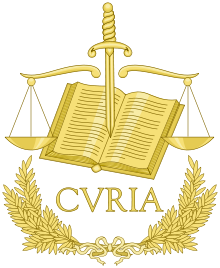 As reported, last week’s European Council summit has reached an agreement on the EU Unified Patent and a EU Unified Patent Court after volatile negotiations on 29 June 2012.
As reported, last week’s European Council summit has reached an agreement on the EU Unified Patent and a EU Unified Patent Court after volatile negotiations on 29 June 2012.
The EU Council thus made a big step forward on its way to achieve the final goal, as expressed in the annex of Doc 10059/12 of 24 May 2012:
On the 1st of April 2014 the system should be ready for the first registration of a European patent with unitary effect.
However, a number of steps – and one big legal problem – still remain to be taken. Already this July, the EU Parliament will have its first plenary session on the EU Patent Package that was postponed on 19 December 2011 by JURI (cf. minutes) and the EU Council will consider the issue as well:
- 3./4. July 2012: Parliamentary deliberations and votes on the three aspects of the “EU Patent Package” (unitary patent, translation arrangement, unified patent court);
- July 2012: Adoption of the Unitary Patent Regulation (unitary patent, translation arrangement) by the EU Council.
But it cannot be expected that the process will run smoothly, as the top-level negotiations at last week’s EU Summit ‘suggested’ – apparently under the pressure of David Cameron and eurosceptic Tory MPs lead by Bill Cash, Chairman of the influential Scrutiny Committee and ‘herald of the apocalypse‘ -
that Articles 6 to 8 of the [Unitary Patent] Regulation [...] to be adopted by the Council and the European Parliament be deleted.
The k/s/n/h::law blog
Some of the patent attorneys of the KSNH law firm have joined their efforts to research what is going on in the various branches of IP law and practice in order to keep themselves, their clients as well as interested circles of the public up to date. This blog is intended to present results of such efforts to a wider public.
Blog Archives
- November 2013 (2)
- October 2013 (1)
- September 2013 (1)
- August 2013 (2)
- July 2013 (3)
- June 2013 (5)
- March 2013 (5)
- February 2013 (4)
- January 2013 (5)
- December 2012 (5)
- November 2012 (5)
- July 2012 (5)
- June 2012 (8)
- May 2012 (5)
- April 2012 (3)
- March 2012 (4)
- February 2012 (5)
- January 2012 (6)
- December 2011 (12)
- November 2011 (9)
- October 2011 (9)
- September 2011 (4)
- August 2011 (7)
- July 2011 (4)
- June 2011 (1)
Blog Categories
- business methods (6)
- EPC (7)
- EPO (12)
- EU law (92)
- ACTA (8)
- CJEU (4)
- Comitology (1)
- competition law (2)
- Enforcement (6)
- EU Unified Patent Court (62)
- FTA India (1)
- TFEU (2)
- Trade Marks (5)
- European Patent Law (37)
- German Patent ACt (PatG) (1)
- German patent law (5)
- Germany (6)
- Pirate Party (3)
- International Patent Law (4)
- PCT (2)
- IP politics (10)
- licenses (2)
- Litigation (5)
- Patentability (7)
- Patents (12)
- Piratenpartei (2)
- Software inventions (10)
- Uncategorized (9)
- Unitary Patent (24)
- US Patent Law (4)
Comments
- kelle on Germany: Copyright Protection More Easily Available For Works Of “Applied Arts”
- Time Limits & Deadlines in Draft UPCA RoP: Counting The Days - KSNH Law - Intangible.Me on Wiki Edition of Agreement on Unified Patent Court Agreement (UPCA)
- Time Limits & Deadlines in Draft UPCA RoP: Counting The Days | ksnh::law on Wiki Edition of Agreement on Unified Patent Court Agreement (UPCA)
- Wiki Edition of Agreement on Unified Patent Cou... on Wiki Edition of Agreement on Unified Patent Court Agreement (UPCA)
- European Commission Takes Next Step Towards Legalising Software Patents in Europe | Techrights on EU Commission publishes Proposal of amendend Brussels I Regulation for ensuring Enforcement of UPC Judgements
Blogroll
- 12:01 Tuesday
- America-Israel Patent Law
- Anticipate This!
- AwakenIP
- BlawgIT
- BLOG@IPJUR.COM
- BP/G Radio Intellectual Property Podcast
- Broken Symmetry
- Class 46
- Director's Forum: David Kappos' Public Blog
- Gray on Claims
- I/P UPDATES
- IAM Magazine Blog
- Intellectual Property Intelligence Blog
- IP Asset Maximizer Blog
- IP CloseUp
- IP Dragon
- IP Watch
- IP Watchdog
- IPBIZ
- ipeg
- IPKat
- ITC 337 Law Blog
- Just a Patent Examiner
- K's Law
- MISSION INTANGIBLE
- Patent Baristas
- Patent Circle
- Patent Docs
- Patently Rubbish
- PatentlyO
- Patents Post-Grant
- Reexamination Alert
- SPICY IP
- Tangible IP
- The 271 Patent Blog
- The Intangible Economy
- THE INVENT BLOG®
- Think IP Strategy
- Tufty the Cat
- Visae Patentes
The KSNH blogging landscape


This blog and the German-language sister blog k/s/n/h::jur link to the two popular and privately run blogs IPJur und VisaePatentes and continue their work and mission with a widened scope and under the aegis of our IP law firm.
ksnhlaw on Twitter
- No public Twitter messages.
 KSNH::JUR Feed (german)
KSNH::JUR Feed (german)- Ist Verschlüsselung passé? September 6, 2013Auf verschiedenen Feldern beruflicher Praxis ist dafür zu sorgen, dass Kommunikation vertraulich bleibt. Die trifft beispielsweise für Ärzte zu, aber auch für Anwälte, darunter auch Patentanwälte. Einer der zahlreichen Aspekte, die in diesem Zusammenhang eine Rolle spielen, ist die Technik, um die Vertraulichkeit beruflicher Kommunikation sicherzustellen. Wa […]
- EU-Einheitspatent: Demonstrativer Optimismus und Zahlenmystik allerorten – Naivität oder politische Beeinflussung? June 26, 2013Nach mehreren vergeblichen Anläufen zur Schaffung eines EU-weiten Patentsystems wurde 1973 als Kompromiss das Europäische Patentübereinkommen unterzeichnet, welches unabhängig von der seinerzeit noch EWG genannten Europäischen Union System zur zentralisierten Patenterteilung mit nachgeordnetem Einspruchsverfahren durch das Europäische Patentamt schuf. Wie wi […]
- Moderne Zeiten oder: DPMA und Patentgericht streiten über die elektronische Akte April 25, 2013Bekanntlich hat das Deutsche Patent- und Markenamt (DPMA) im Jahre 2013 mit der rein technischen Fertigstellung der Einrichtungen zur elektronischen Akteneinsicht einen wichtigen Meilenstein seines Überganges von der Papierakte zur “elektronischen Akte” erreicht. Im DPMA werden aber bereits seit dem 01. Juni 2011 Patente, Gebrauchsmuster, Topografien und erg […]
- Gutachten zu Forschung, Innovation und technologischer Leistungsfähigkeit Deutschlands 2013 March 11, 2013Unter dem Datum vom 28. Februar 2013 ist die Bundestags-Drucksache 17/12611 veröffentlicht worden Sie trägt den Titel Unterrichtung durch die Bundesregierung - Gutachten zu Forschung, Innovation und technologischer Leistungsfähigkeit Deutschlands 2013. Die Bundesregierung legt dem Deutschen Bundestag seit dem Jahr 2008 […]
- 3D-Printing: Zum Filesharing von 3D-Modelldaten February 25, 2013In meiner kleinen zuvor angekündigten Reihe über rechtliche Aspekte des 3D Printing komme ich heute auf die Frage zu sprechen, ob die Hersteller von Gerätschaften es hinnehmen müssen, wenn Ersatztreile davon – vom Brillengestell über Smartphone-Gehäuseteile bis hin zu Rastenmähermotor-Abdeckungen – gescannt und die daraus […]
- Ist Verschlüsselung passé? September 6, 2013

